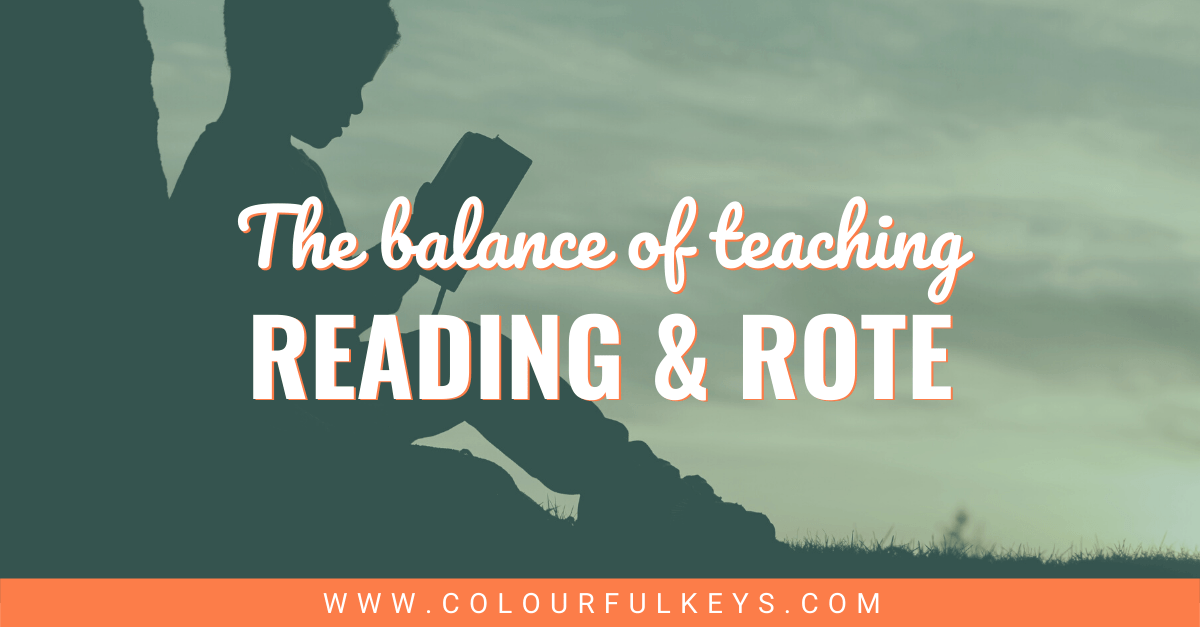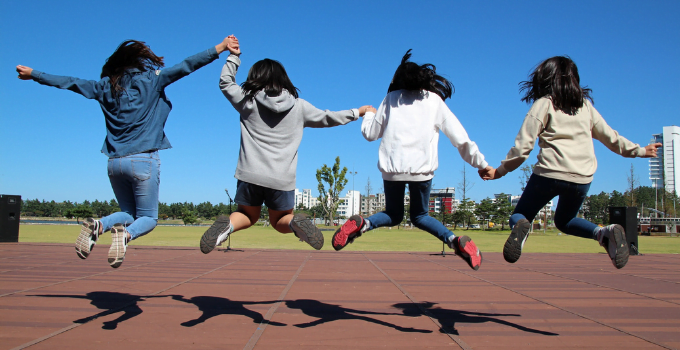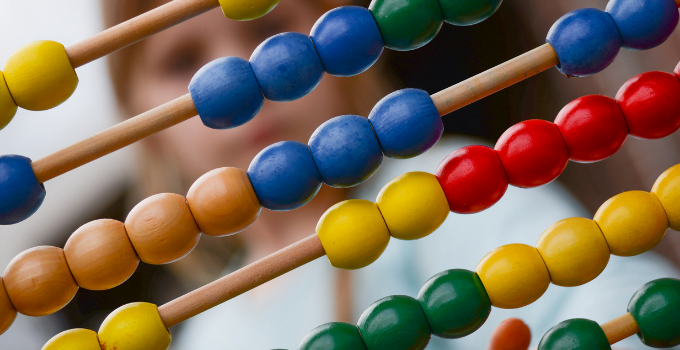
This article about teaching rote piano music to boost sight reading skills was written by Joanna Shiel. Joanna runs a multi-teacher piano school based in London, which she currently manages from abroad. When not teaching, she loves playing the dance machine in the arcade, enjoying a coffee at art galleries and discovering new hiking spots. Her favourite dessert is lemon meringue pie.
Have you ever had a student who really struggles to sight read? Do your students love sight reading? Have you ever had a transfer student who can play well, but can’t just pick up a piece and read it?

Today, my student Thomas had a eureka moment learning a very new, 2-page, seemingly overwhelming piece a little above his reading level. When we broke the piece down, learning portions first by rote and then analysing the music, he discovered that it really just had 4 bars which repeated.
It was a powerful moment.
Students develop many important skills when learning pieces through rote teaching such as recognising patterns, developing their internal ear and refining technique. This translates well when they go on to sight read a piece.
Why Rote teaching Boosts Piano Sight Reading Skills
When we look at the skills students practise when learning a rote piece, we can see how they complement the skills students need for great sight reading.

As you can see, there are many overlaps between the two. Being an excellent rote learner and player probably means that you will be a better-than-average sight reader.
Therefore, students with an excellent grounding in learning music by rote will already have a lot of foundational skills in place for reading music, making the leap to sight reading (and reading in general) much easier.
The skills for reading music are not as intuitive as learning by rote, however, and will require separate practice.
Where are your students in the chart above? Are there any skills they could improve on through rote teaching before taking the leap into sight reading piano music?
Who This Works For
Well the answer is simple: everyone (but especially older students.)

I get my youngest students clapping and playing simple rhythms, such as finding crotchets (quarter notes) and quavers (eighth notes) in the music they’ve just learnt by rote, well before they’re ready to start their first sight reading piece.
If you have students with additional needs, they can do especially well with this method. Although, it might be interesting to take the opposite approach and practise reading first as they often already have a natural ear.
Adults do really well with the rote-before-reading method. Once they connect up/down to the written direction of the music they’ve just played by ear, you can see the light bulb above their heads.
The Right Mindset
Both teacher and student need to understand that reading can happen quickly, and that it doesn’t have to be painful or a chore AT ALL.
We simply have to remind students that learning to sight read is all about being a pattern detective – both aurally and visually.
There is also an aspect of re-education needed for us as teachers. Reading isn’t the be-all and end-all of learning a piece.
Reading should be used in conjunction with a wider exploration involving listening, finding patterns, exploring colour, improvising using scales from the music and finding meaning in what we’re doing, rather than being one of the only ways to learn music.
Every piece we read is ultimately a piece of music. And everything that comes with that is a piece of art – never solely an exercise.
Need help teaching rote piano music? Struggling to work sight reading into your lesson plans? You’ll love the resources and guidance on Nicola’s hub page about Planning Lessons!
When to Use the Score
When we look at teaching a rote piece to our music students as a way to reinforce or teach piano sight reading, it’s important that we approach it in an appropriate way.

The chicken, or the egg?
I advocate always introducing a rote piece as rote first and then sight reading, rather than the other way around. Rote pieces are often designed specifically to be highly patterned, written especially for learning by rote vs. sight reading.
The exception to this would be if you were teaching students with an excellent ear, such as some students with additional needs.
Should we always read the score of a rote piece?
It depends. First, figure out the needs of your student: where they are with their learning, and whether they’re ready to actually sight read.
Some students, especially adult students, are ready to start being challenged straight away and I think it would be appropriate to introduce sight reading alongside the rote piece. Test and see.
Toolbox Tips for Blending Rote with Sight Reading
Here are some ideas to get you started teaching piano sight reading with a rote piece.
Add, Subtract and Disappear
Once the student knows their rote piece really well, place the piece you want your student to read in front of them. Then perform the piece by adding something new, taking something away, or covering up entire sections or bars (measures) of the piece.

Can your student find out what you did? Better yet, can they work out exactly what you changed?
Have Differently-Levelled Versions of the Same Rote Piece
Samantha Coates does this excellently with her Blitz Books. Start with Level 1 of the piece – which is taught by rote – then move to level 2, where you look at the same score but with some additions.
Finally, move to level 3. This is where you might like to experiment by getting the student to come up with their own additions or experiment further with our previous tool by adding, subtracting or disappearing parts of the piece.
Introduce Composition to Explore the Building Blocks of Sight Reading
If your student is learning how to read simple rhythms, then use this as an opportunity to modify a well-learnt rote piece by adding some extra crotchets (quarter notes) and minims (half notes) to the piece.
If a student is learning to recognise broken chords or scale-based passages, is there an opportunity to modify the left hand of a memorised rote piece to further explore that concept?
What if we adapted a rote piece to include a 4-bar improvised phrase to explore a scale that student has just learnt?
The possibilities are really endless.
Resources to Get You Started
Thankfully, rote teaching has now become an accepted way of teaching piano music and there are many books out there to help get you started. Here are some of my recommended rote resources to get you started.
‘Blitz Books’ by Samantha Coates
Samantha Coates releases new Blitz Books monthly. Her multi-levelled pieces work especially well with adult students, and she encourages exploration and creativity as a way to expand rote learning.
Paula Dreyer’s ‘Little Gems‘
Paula Dreyer has written several gorgeous books of rote pieces called Little Gems. Her books are suitable for children through to adults, primer to advanced.
These pieces are beautifully engaging and imaginative, and will get students practising a wide variety of techniques.
‘Puzzle Play’ by Forrest Kinney
A special mention to Forrest Kinney here. I love to use his books on arranging to teach pieces first by ear and rote before exploring more creative paths, like altering rhythm and harmony.
‘Piano Safari’ by Katherine Fisher and Dr. Julie Knerr
The Piano Safari method combines reading and rote perfectly, alternating between the two.
Especially great for new beginners from children aged 4+ to adults, this method will get students playing the whole range of the piano, exploring different articulations and dynamics. Technique is especially emphasised in this method which makes it special.
Of note, this is the first method I’ve come across which uses pieces especially designed for children aged 4-6. In Piano Safari Friends’ Follow-the-Leader pieces children imitate the teacher, learning important skills such as technique, pulse and rhythm.
These pieces are great place to start to introduce reading simple rhythmic notation. Small children often become naturally curious about the sheet music after we have played and learnt the rote piece together.
What tools do you use when teaching sight reading to your piano students?
Have you ever tried analysing the score after a sudent has learnt a rote piece? How did it go? Share your thoughts in the comments below.

Parents are proud to watch their own children. I make a video of their child’s own hands playing the wrote piece–with a great smile at the end. They know that the video is only a help video and that they can make faults which we talk through on the video. I use my phone and send it via whatsapp. While we are learning bits of the piece, I ask them to run around a nearby tree and then we see if something still sticks when they come back.
Hi Minette, many thanks for sharing this excellent teaching method!
Such a good post. This can be my go-to reading recommendation for teachers who ask me why they should use rote learning!
Thank you Rebecca, it’s very much appreciated receiving useful feedback and to hear how this post can be employed by the wider teaching community in your area, enjoy!
Wonderful post! Wholeheartedly agree with everything said!!!
Many thanks Samantha! So pleased to receive your positive feedback on this post and that it will be of use to you…enjoy!